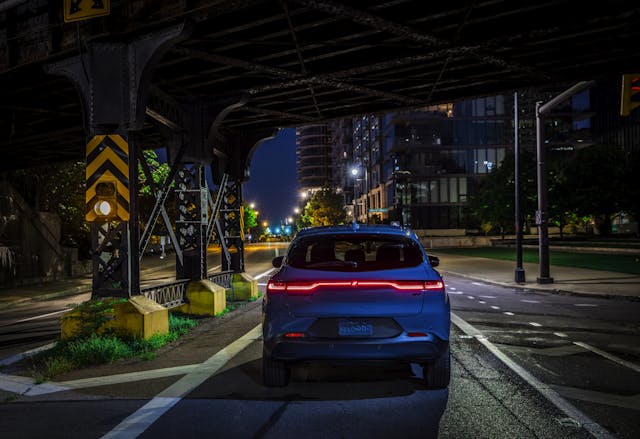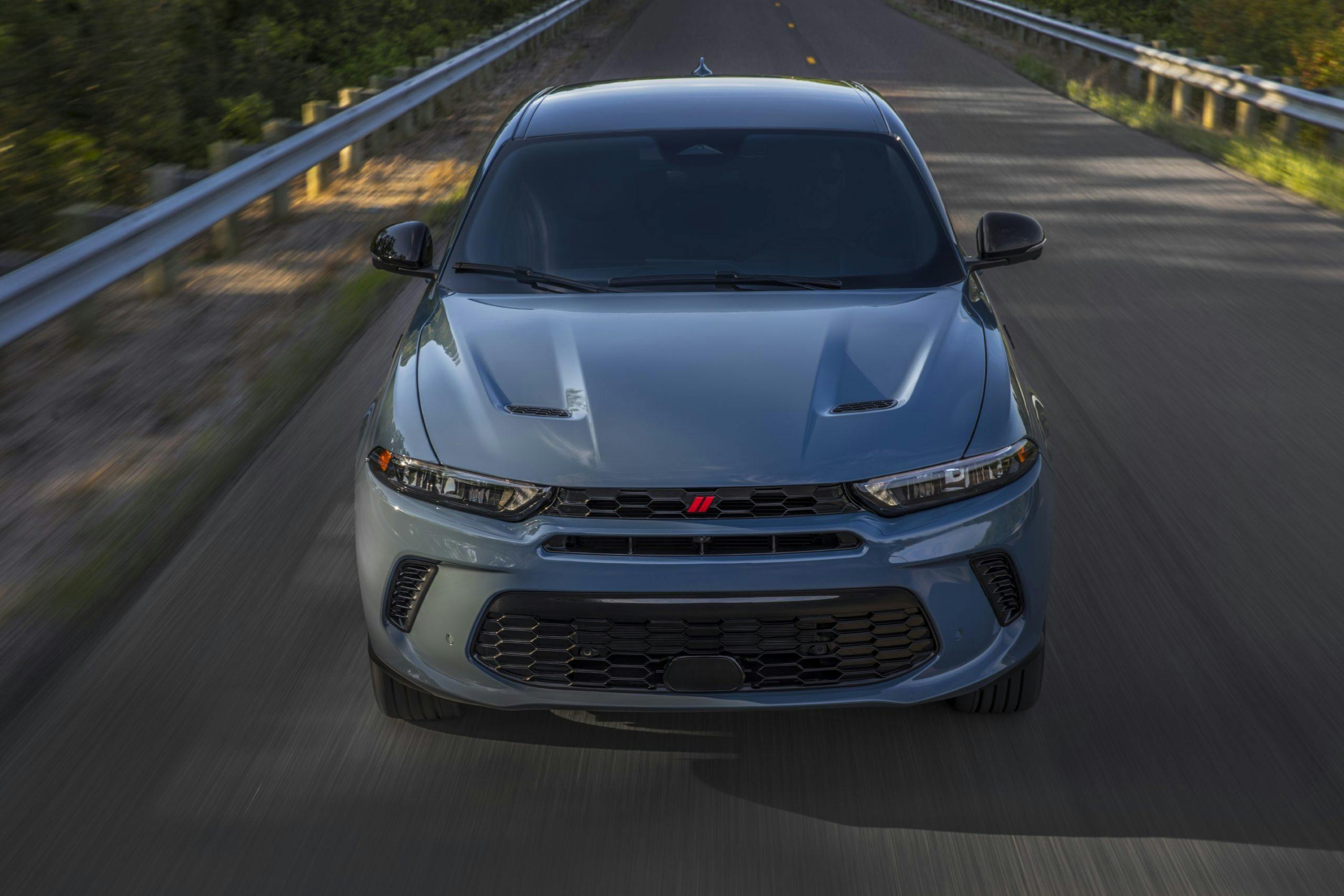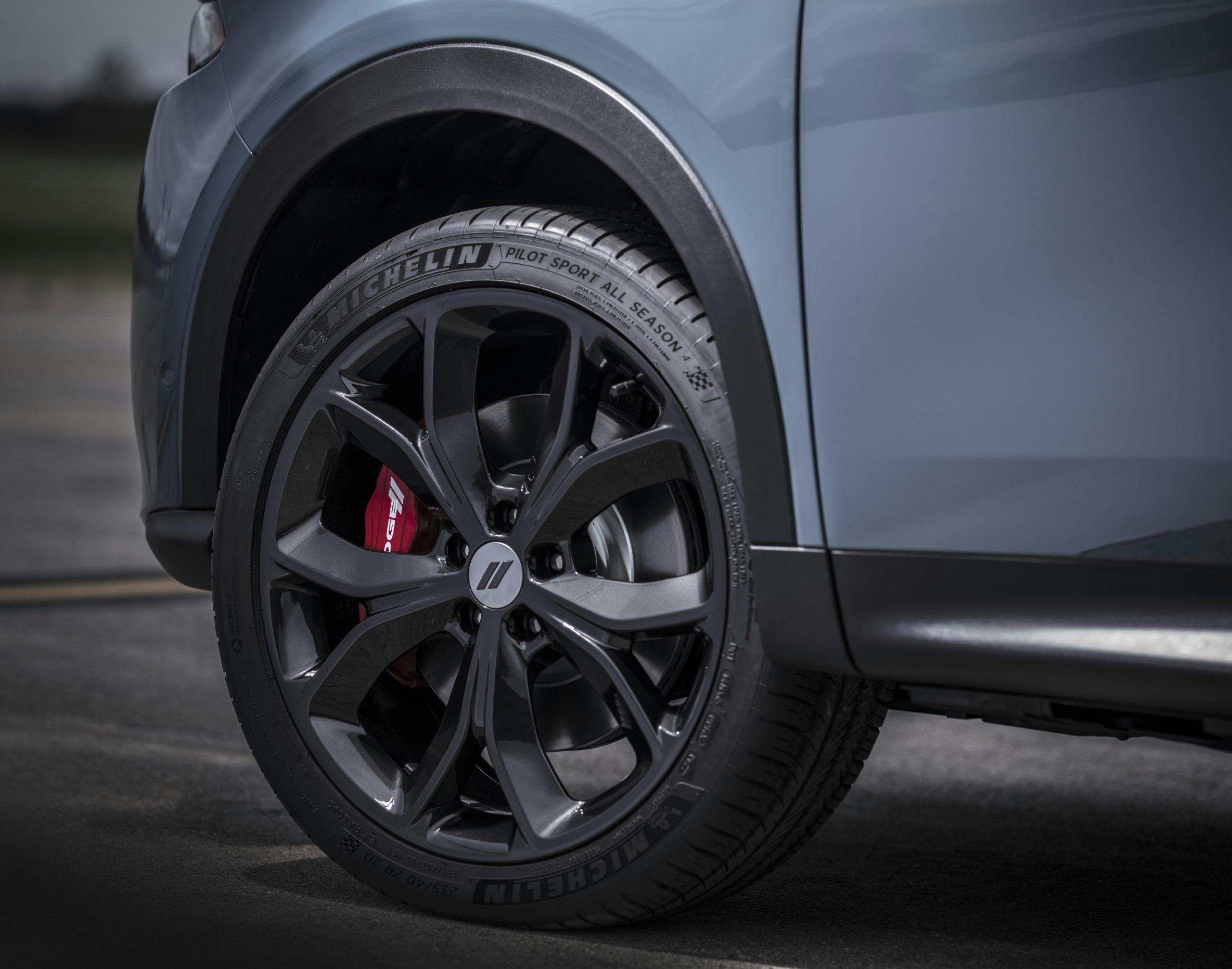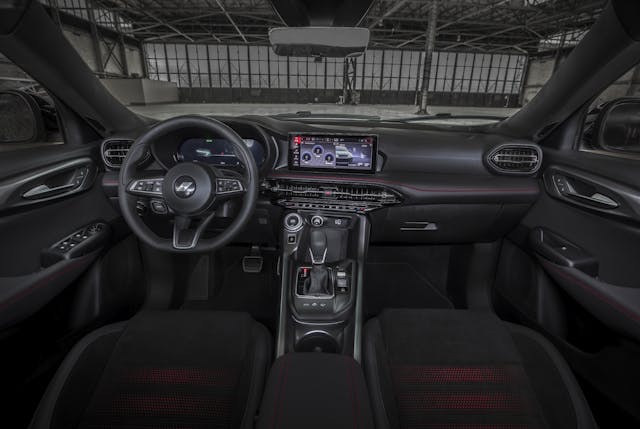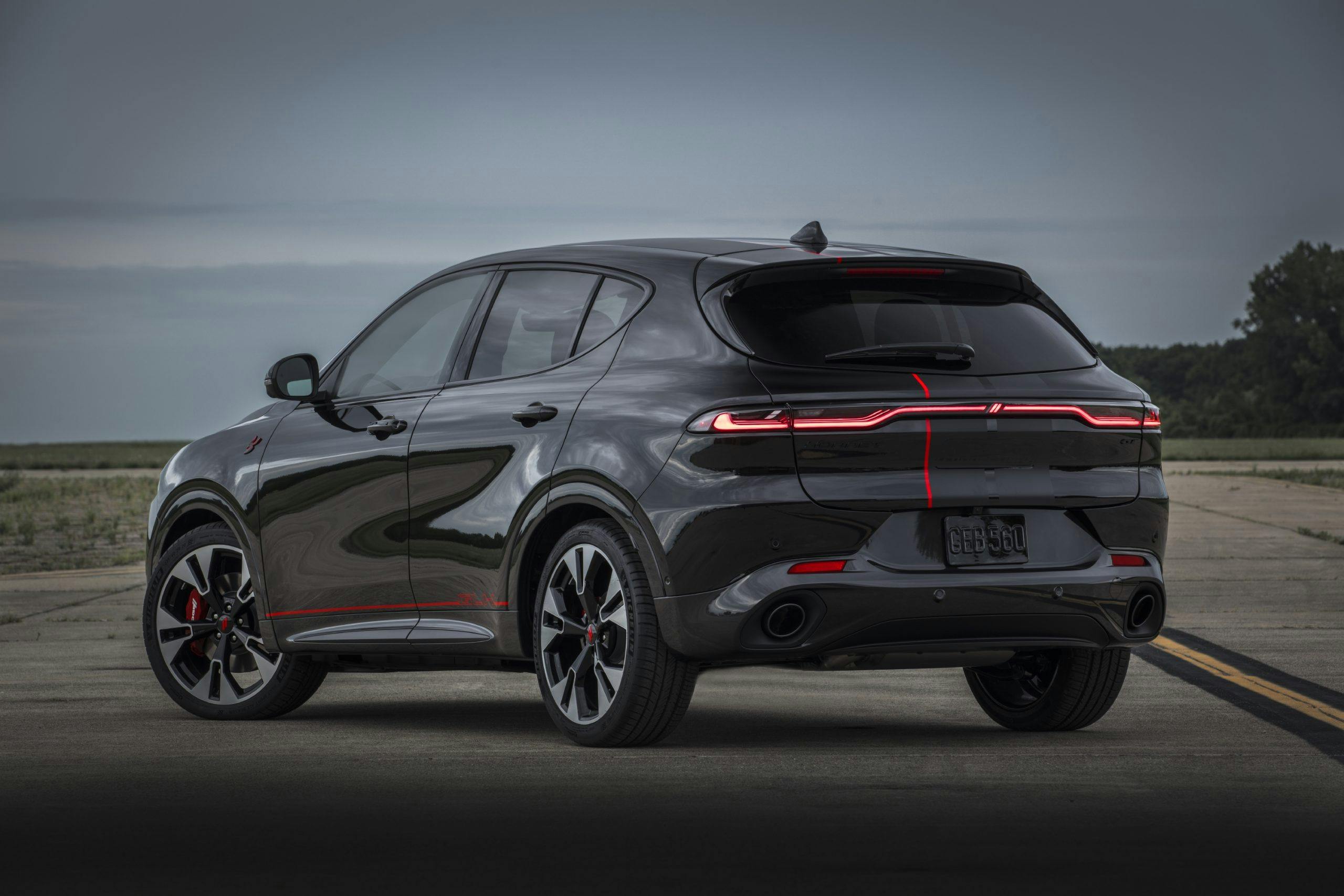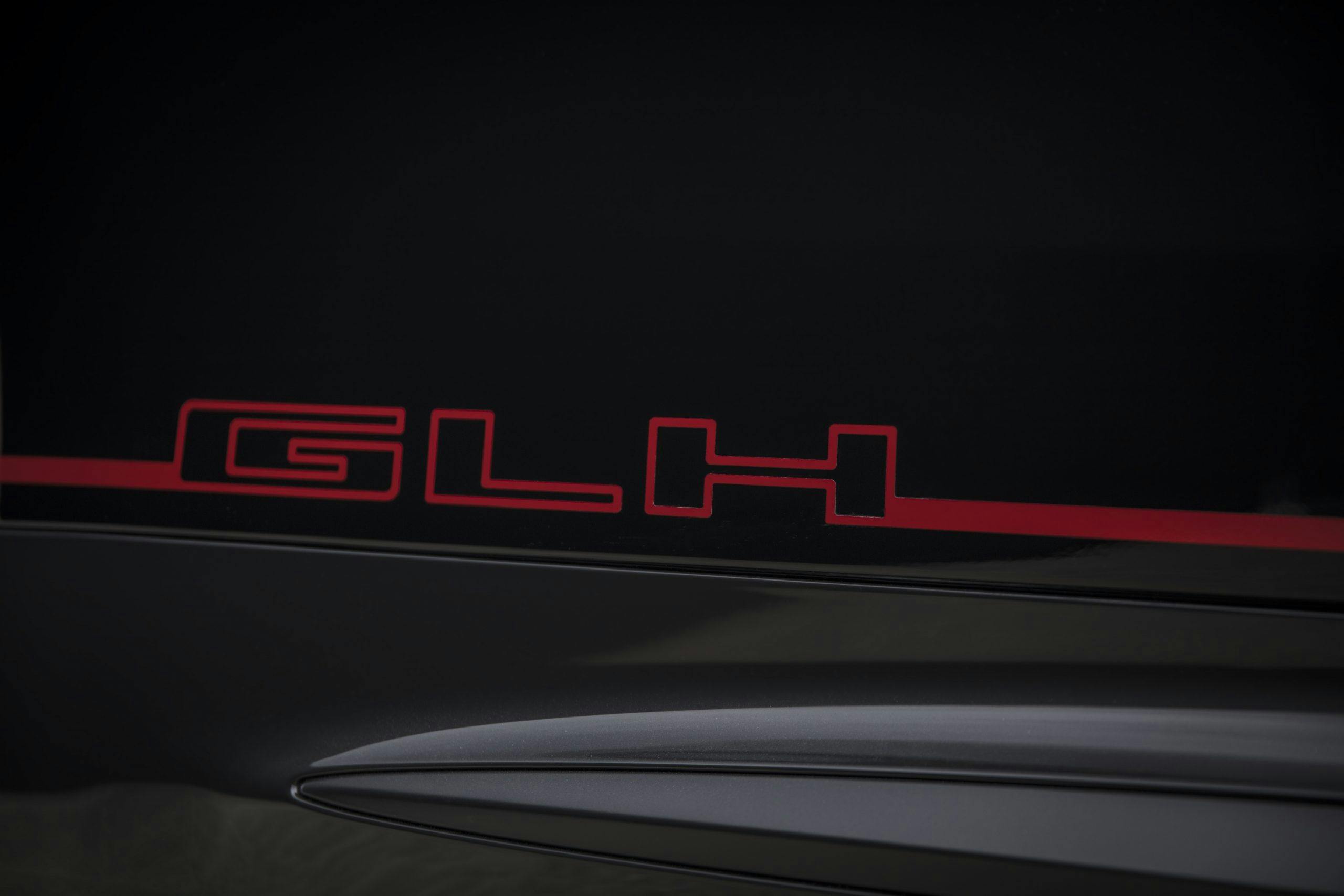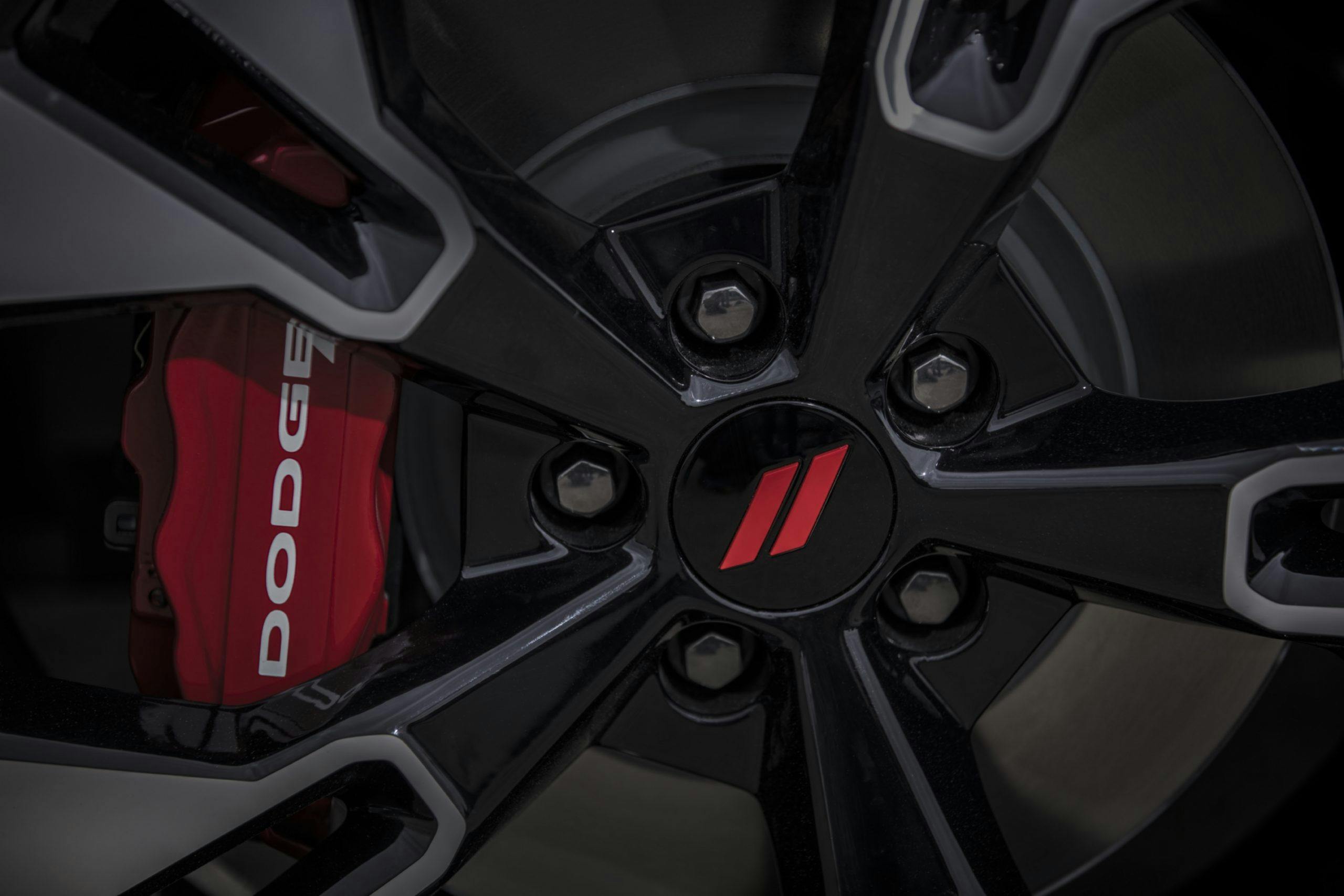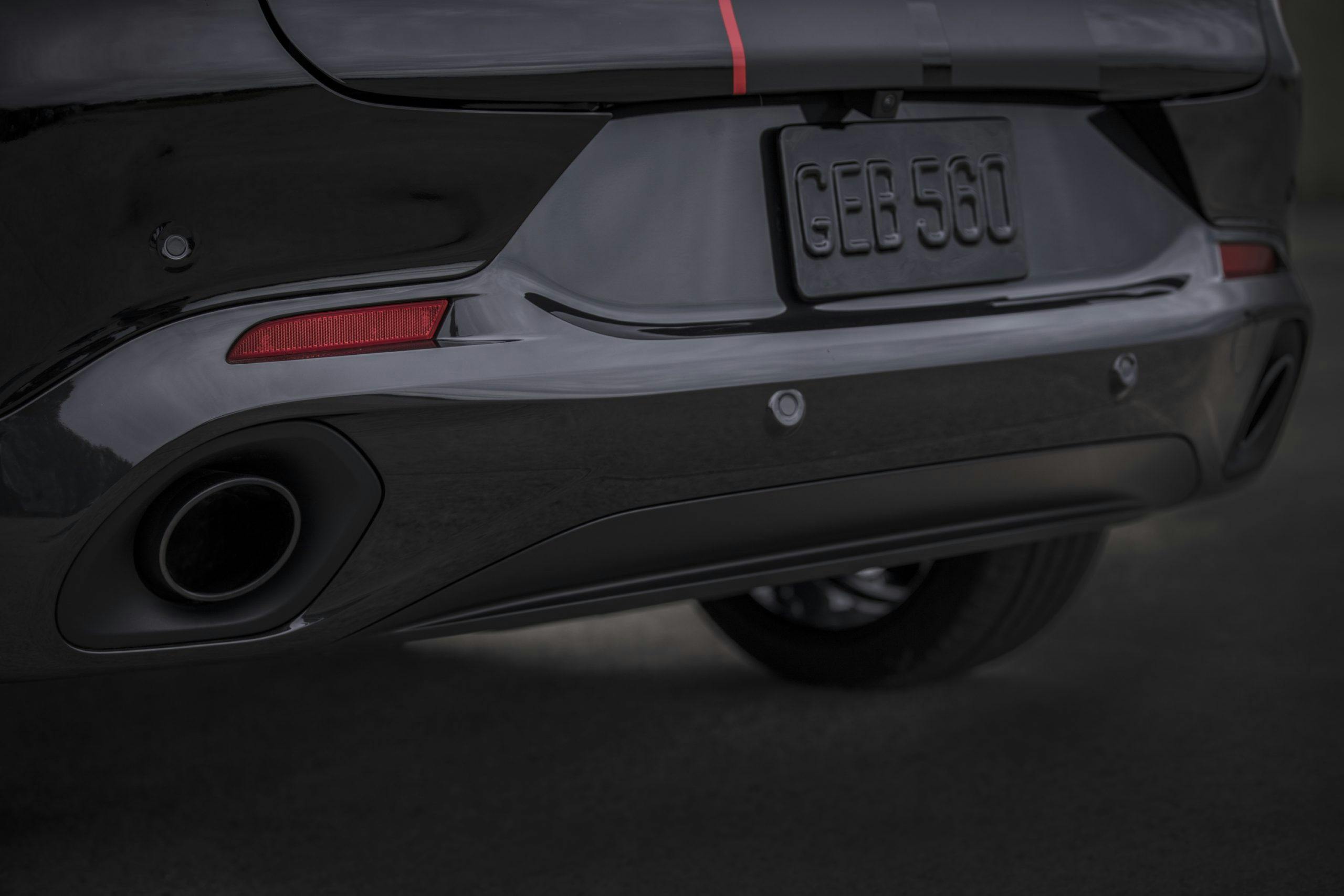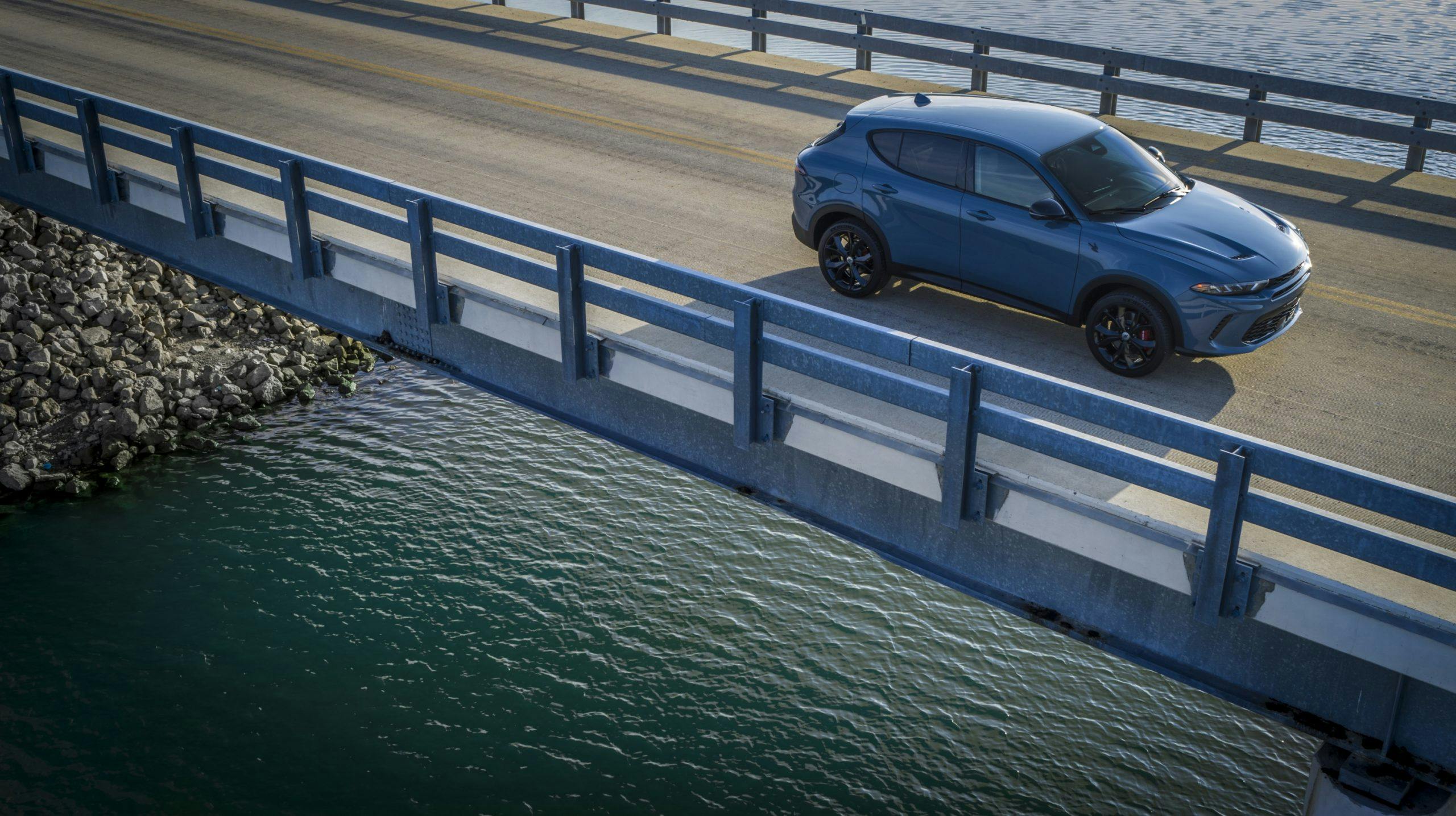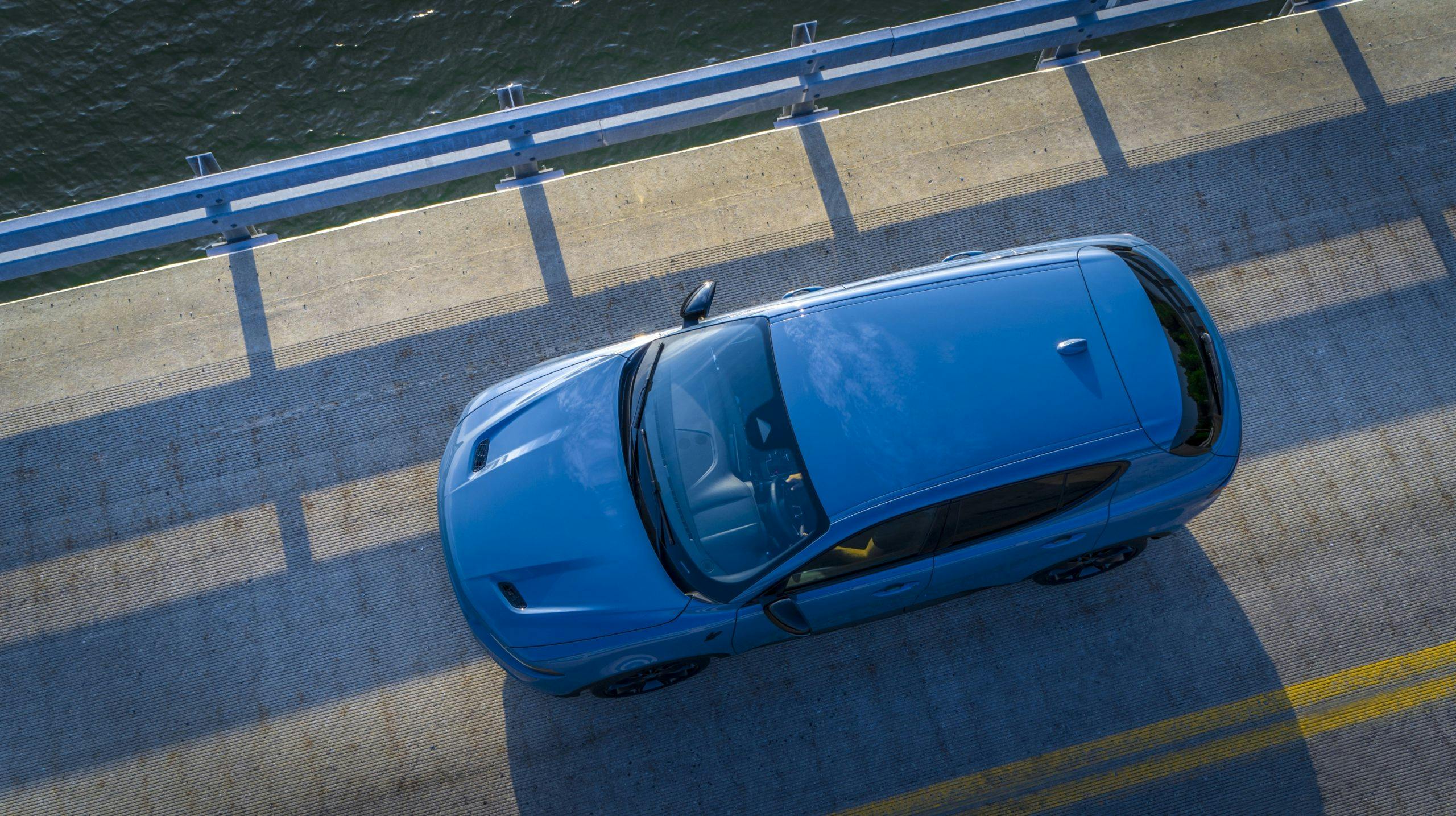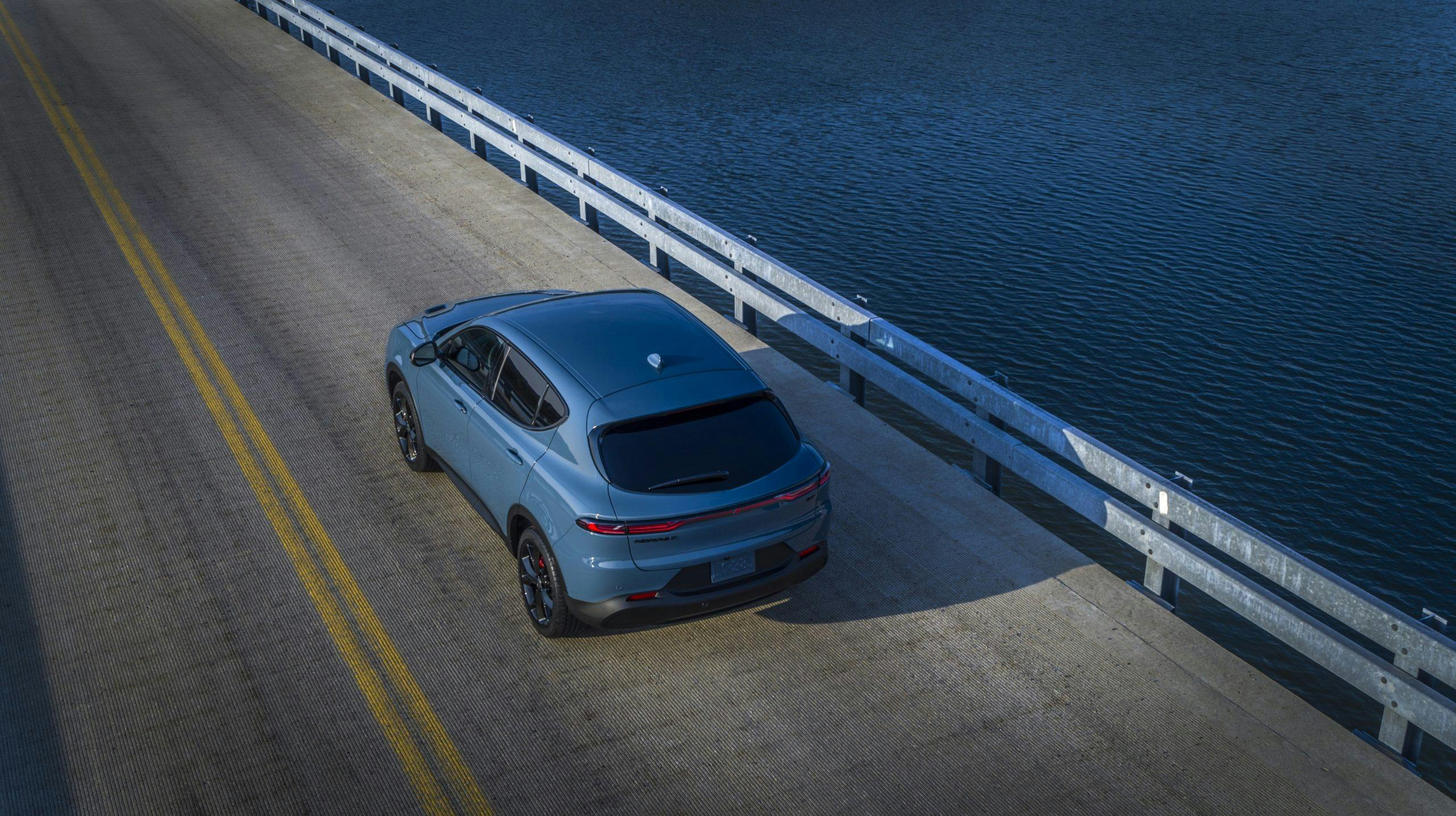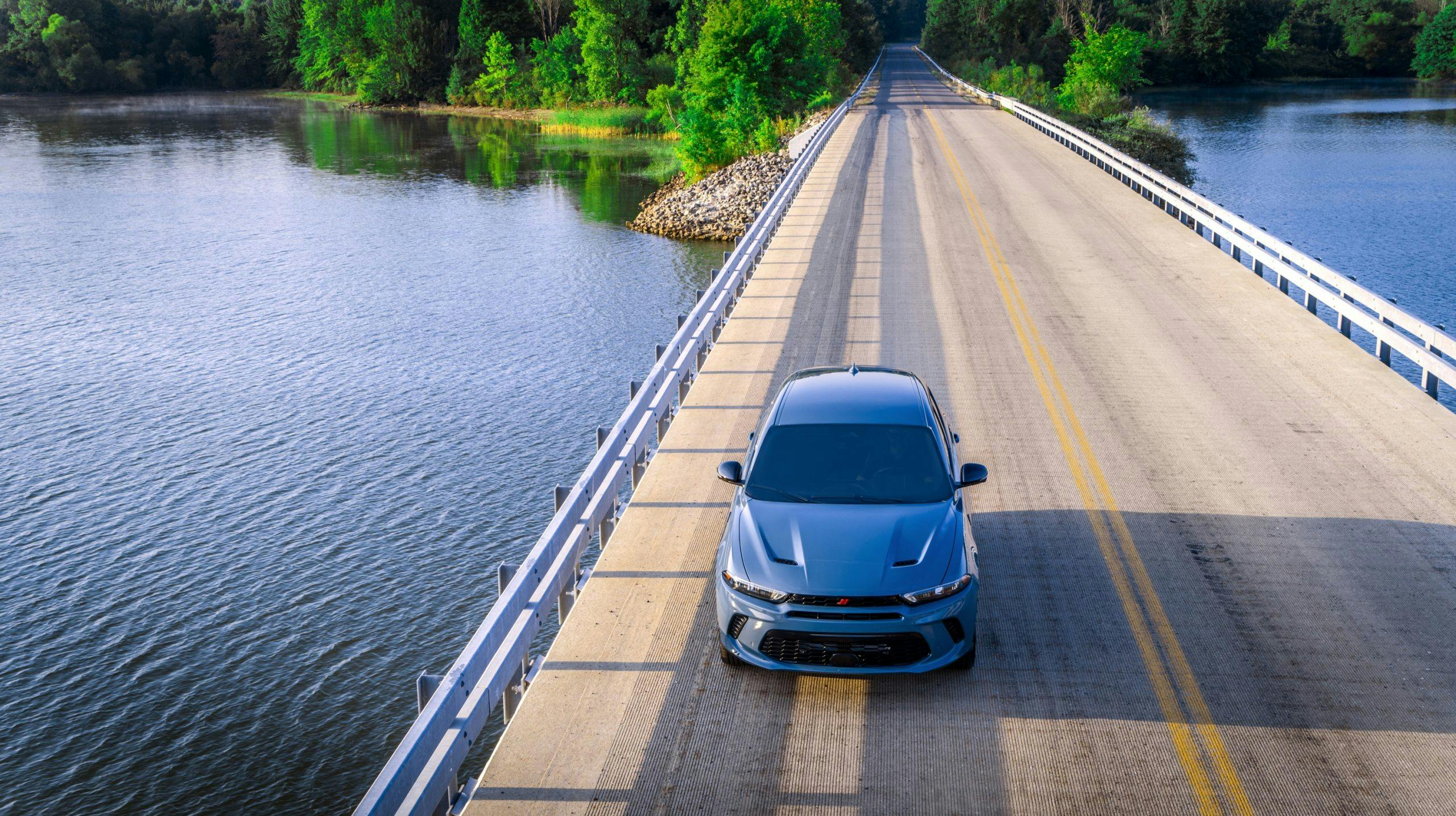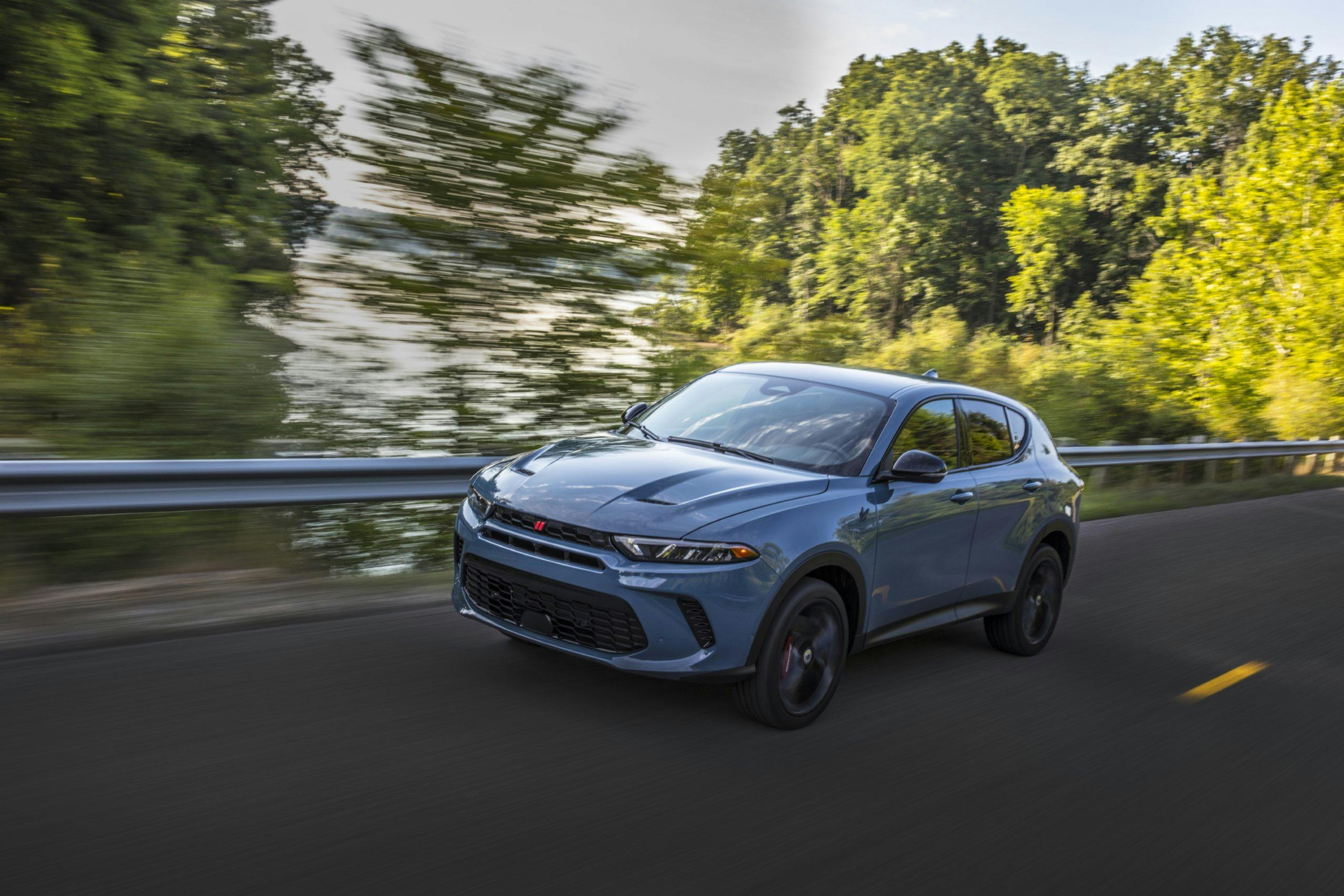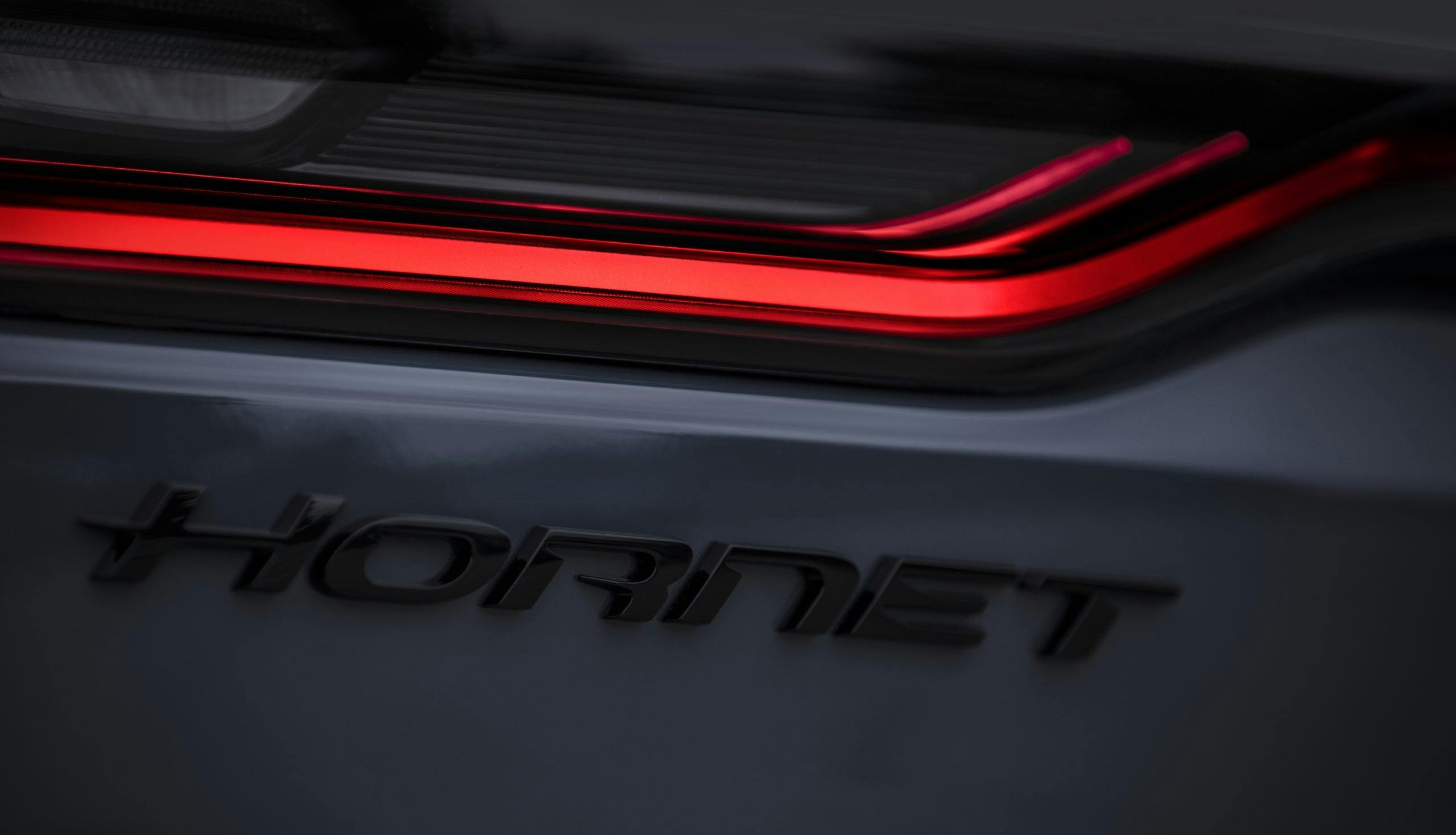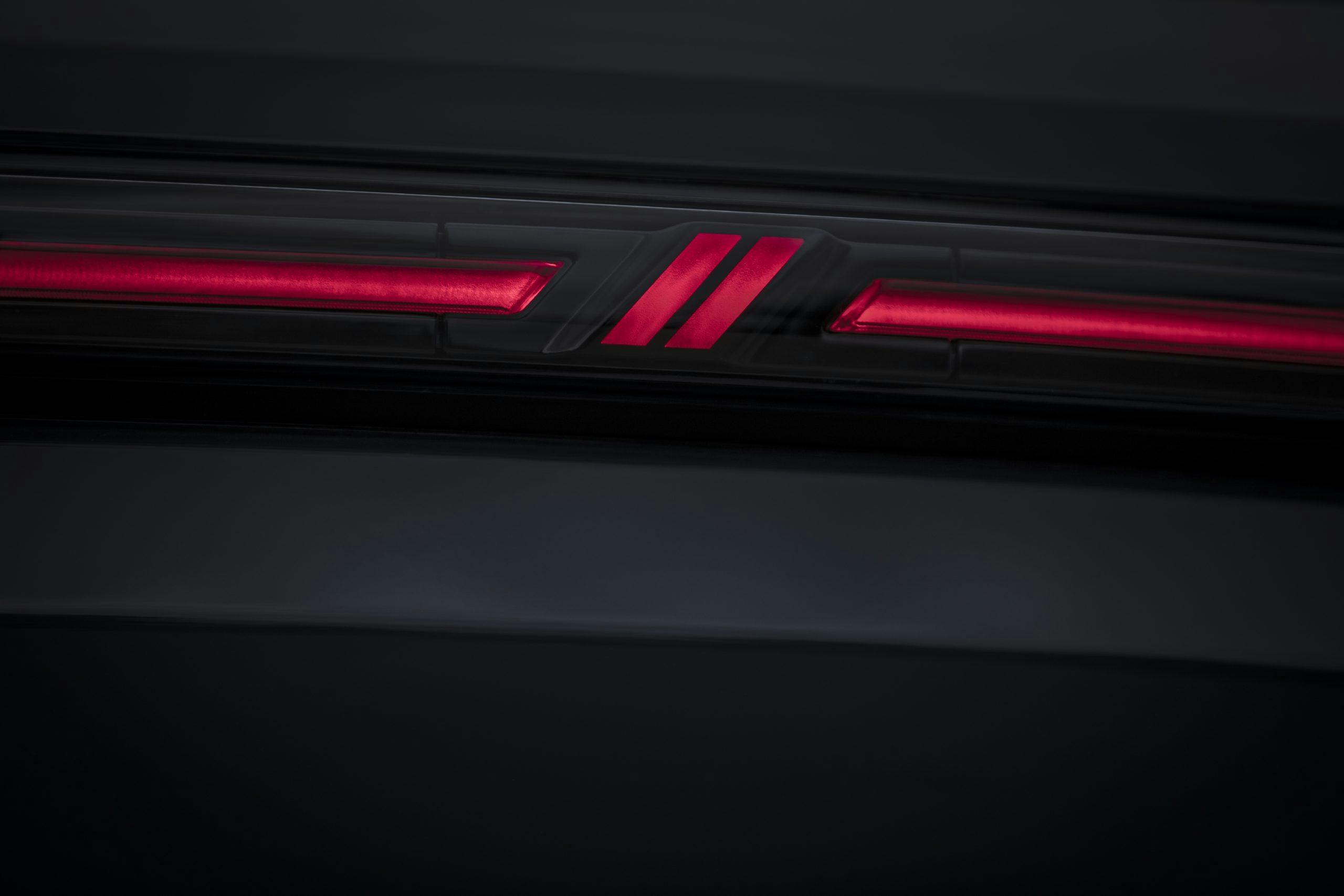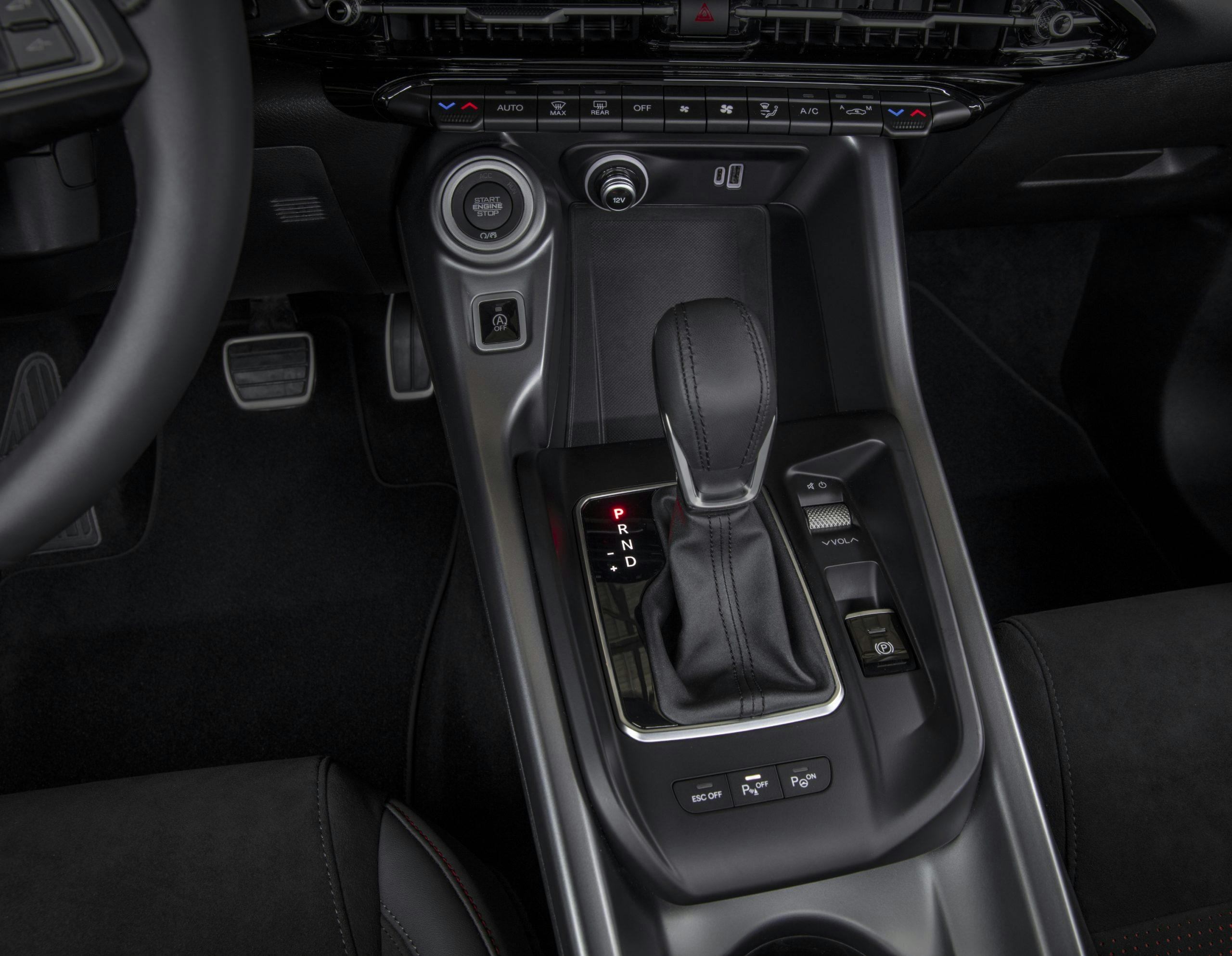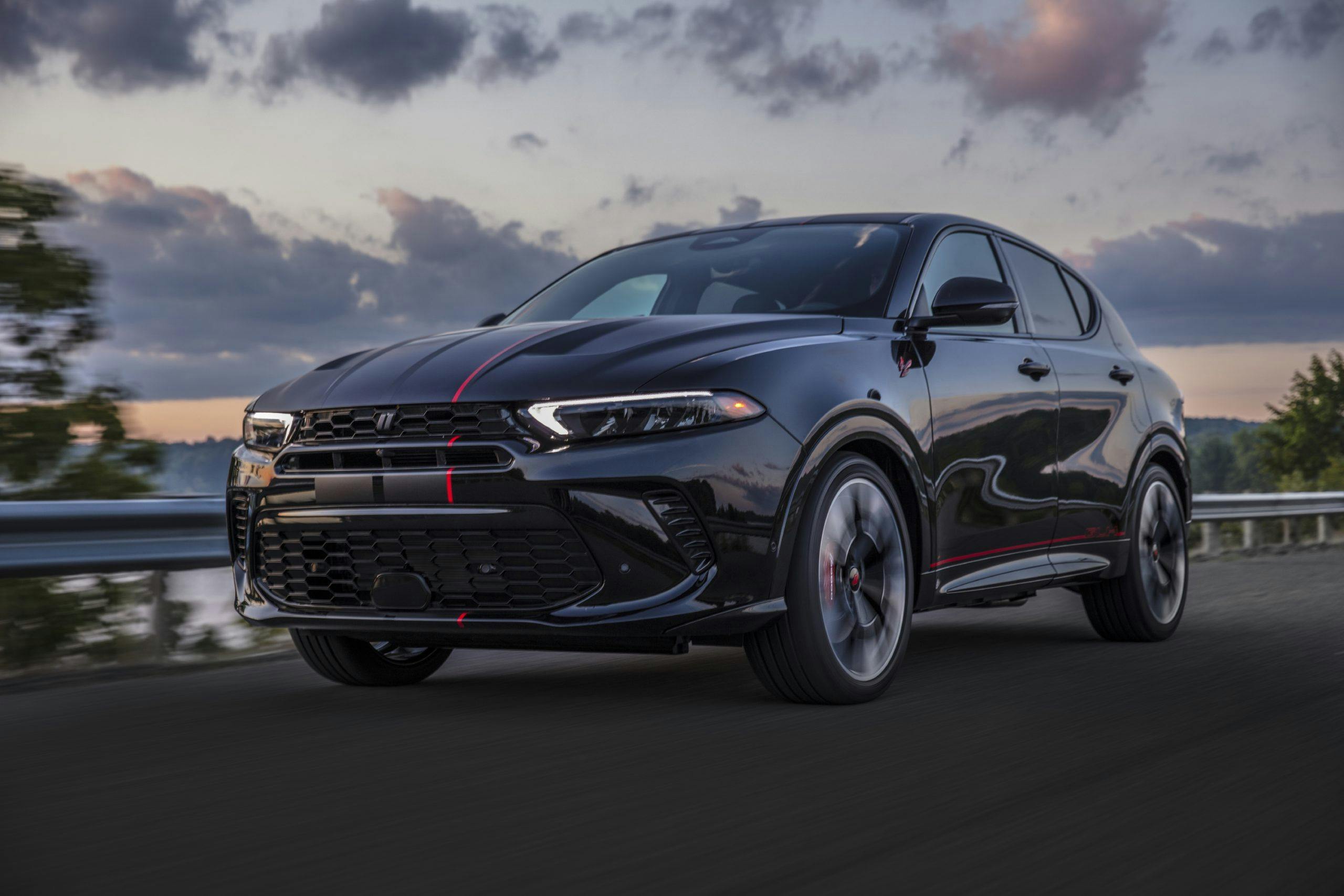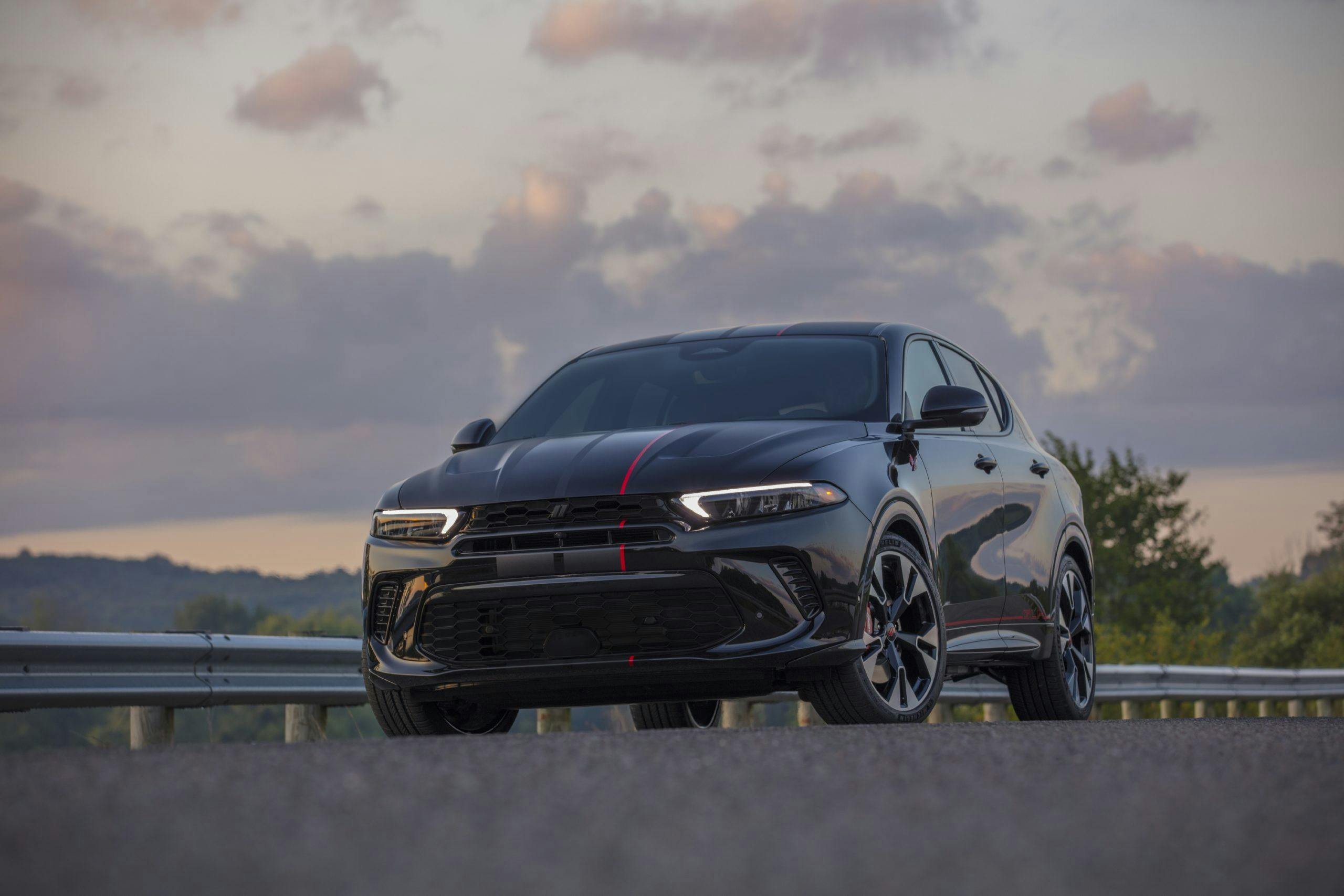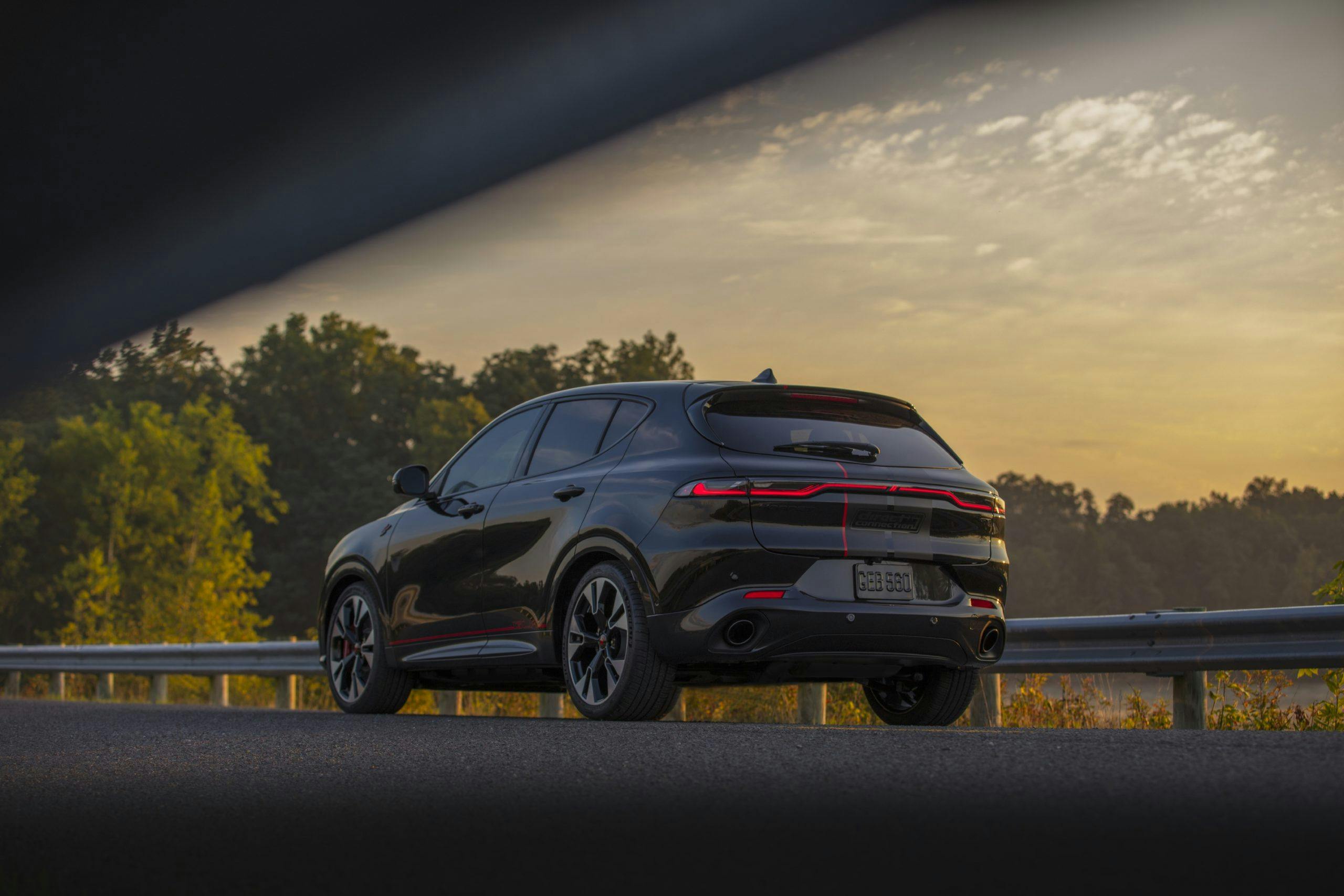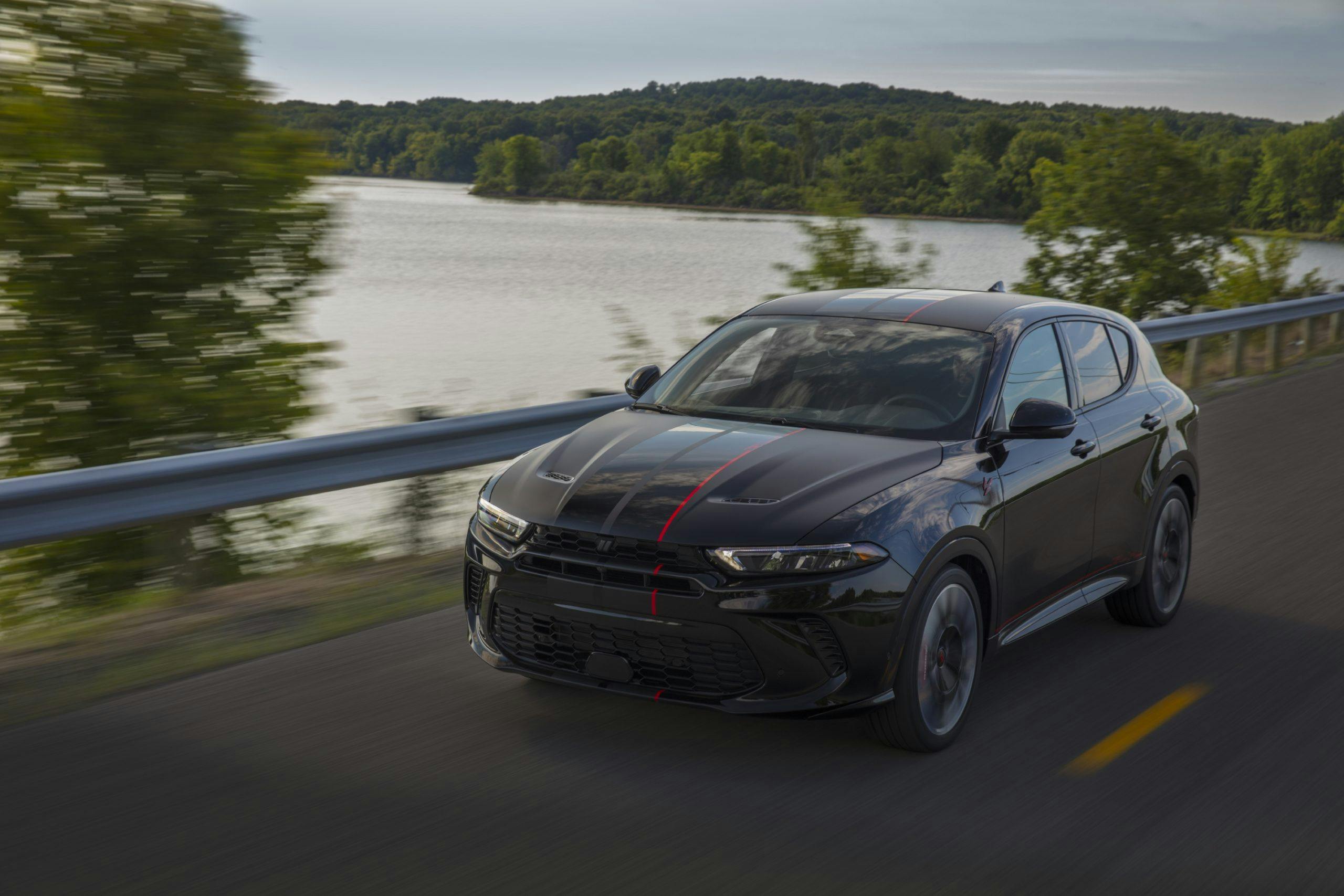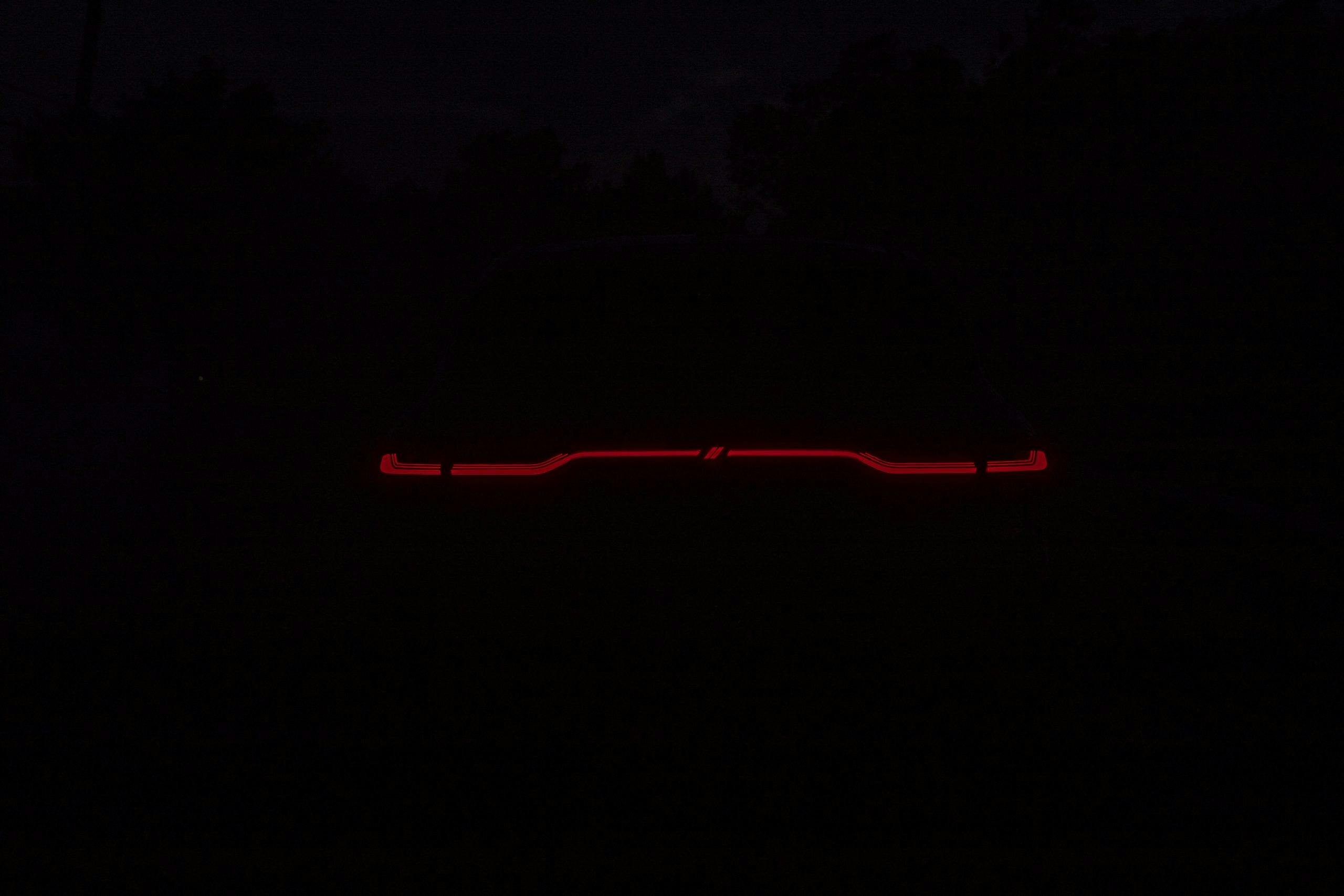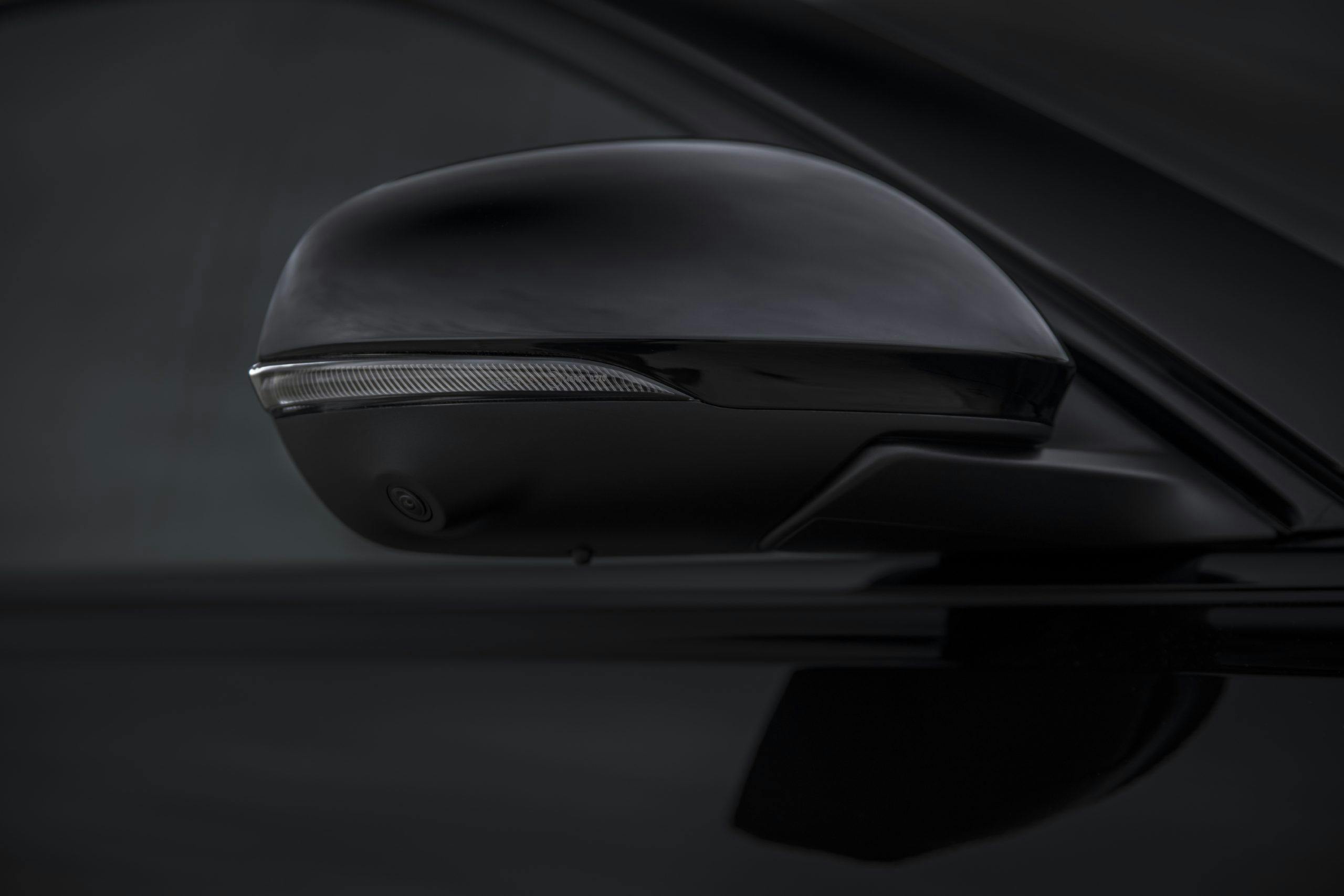Media | Articles
Hornet: Dodge’s new volume-seller bets on performance
It was amid the live hair-metal band’s fairly impressive rendition of Bon Jovi’s “Shot Through the Heart,” that it hit me. The Dodge Hornet, still draped in auto-show cloth, is the first new Dodge in more than a decade. I’m not talking about wide-body versions of the Charger, which dates to 2011, or the Challenger, which dates to 2008. Nor am I counting Hellcat models like the Durango, an SUV last meaningfully updated (also) in 2011. This a new Dodge!
Off comes the cover and it’s … a decently designed little crossover … that generally resembles the Alfa Romeo Tonale on which it is based.
Maybe it’s because we’ve been conditioned that every Dodge these days should look like it just robbed a bank, but the Hornet at first seemed a little underwhelming. There is a softness and tautness to the lines that speak to its European underpinnings. It’s handsome, though, and the full-width taillight signature evokes higher-end cars like the Porsche Cayenne.
There is a new Challenger that’ll arrive next year, likely as a 2024 model, but no doubt the Hornet is going to be a major volume player for the brand. The car is a little late to the subcompact crossover segment, so it’ll need to distinguish itself.
On cue, CEO Tim Kuniskis trotted out on stage and busted out some very Dodge-like performance figures, relative to the segment. The base 2023 Hornet GT will have as standard:
Marketplace
Buy and sell classics with confidence
- 265+ hp and 295 lb-ft of torque from a 2.0-liter turbo-four
- Nine-speed autobox
- Standard all-wheel drive
- Electronic limited-slip differential
- Koni shocks
- Starting price of $29,995 without destination
Engine output for the four-cylinder is on par with what upmarket Alfa Romeo will get for the Tonale. For reference, a VW Taos makes 158 hp and Hyundai Kona N-Line makes 195 hp. The Hornet’s closest performance competitor is the Mazda CX-30 2.5 Turbo, good for 265 hp and 320 lb-ft of torque and also costing about $30,000.
Kuniskis was keen to point out that while other OEMs can sweat boring stuff like cargo capacity, Dodge is dedicating itself to performance. “We have a history of stuffing horsepower into otherwise stodgy segments,” he told journalists. “We sell cars people want, not what people need.”
What Dodge needs is to catch up to competitors and release hybrids and EVs so it doesn’t have to keep buying CO2 offset credits from Tesla. To our chagrin, the Hemi is hanging it up in favor of electrified power for future muscle cars, and the Hornet’s top trim (of two) will be the plug-in hybrid R/T, combining a 1.3-liter turbo-four with a 15.5 kWh battery and single rear electric motor. All-electric range tops out at 30 miles.
Rather than give it a green-sounding name like PHEV, which Kuniskis dismissed as marketing jargon that “sounds like bullshit,” Dodge was confident the hybrid’s performance justified giving it the historic R/T badge. With at least 285 hp and 383 lb-ft (!) of torque, it sounds promising. The R/T will feature a “Powershot” push-to-pass button which will max out battery discharge for a short period of time, increasing power by 25 percent and knocking a full second off of the 0-60 time, to 6.1 seconds. (Which also suggests the Hornet R/T won’t exactly be a featherweight.)
Kuniskis, basically the Santa Claus of V-8 muscle cars, told me that his first drive in the Hornet R/T really impressed him. “That plug-in hybrid powertrain is amazing—it really messes with your head.”
How about another head-spinner: the R/T will cost $39,995 before destination. That’s five grand more than the Escape PHEV, but the Ford is about as performance-oriented as a dazed groundhog and does not come standard with fixed-caliper Brembo brakes. For those wanting Brembos on the base GT, there is a $2995 Track Pack that adds the stoppers as well as 20-inch wheels, dual-stage suspension, and special interior touches. The Track Pack is also offered on the R/T, presumably at a different price, though Dodge has not confirmed that detail just yet.
If you want even more performance in your commuter crossover (can’t people just buy sedans and wagons again?) Dodge is opening up its Direct Connection catalog for the Hornet. The Hornet GLH Concept shown at the reveal event in Detroit today resurrects a badge not seen since the Omni GLH in the mid 1980s, highlighting performance components such as an ECU tune, lowered suspension, unrestricted dual exhaust, and GLH graphics. Direct Connection parts for the Hornet will be dealer-installed.
The Hornet interior looks solid and doesn’t feel cheap or cost-cut in high-touch areas, but it’s not up to snuff relative to Mazda levels of appointment. The center console is fairly deep but annoyingly narrow. Back seat space feels about middle of the road for the segment. The cargo area is deep enough to lay flat a couple of small suitcases—the kind that fit snugly in airplane overhead compartments—with a bit of room on the trunk floor to spare. Seats fold down, and as you’d expect, and there is a handy Euro-style pass-through for skis or hockey sticks.
I’m looking forward to spending more time with the Hornet in the year to come. Though the Challenger and Charger will carry the torch in whatever battery-powered shape there is to come, Dodge needs to get its first new model in years right if it hopes to once again become a full-line OEM that can compete with Chevy and Ford. This early preview seems to be a promising start.

